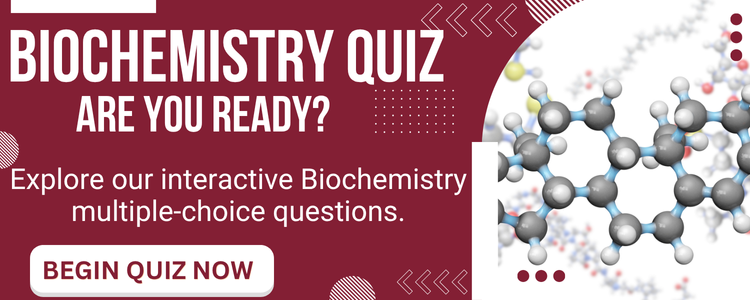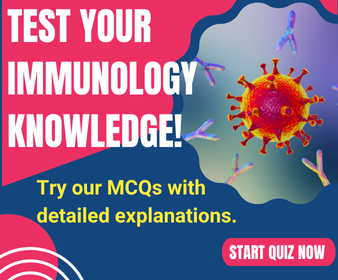In this article, I briefly describe severe combined immunodeficiency (SCID) and its interruption with T-cell and B-cell responses.
Combined Immunodeficiencies
The diseases that result from impaired T-cell function or absence of T cells, combined with some disruption of antibody responses, are known as combined immunodeficiencies. T helper cells (TH cells) are needed for the complete activation of B cells, antibody production, heavy-chain class switching, and affinity maturation. Thus, defects in the T-cell compartment affect the humoral system.
T-cell dysfunction can lead to diminished delayed-type hypersensitivity responses and weakened cell-mediated cytotoxicity, making individuals more vulnerable to various infectious agents, particularly viruses, protozoa, and fungi. For example, Mycobacterium infections are frequently observed in patients with CID, highlighting the crucial role of T cells in combating intracellular pathogens. Similarly, viruses that typically do not cause disease, such as cytomegalovirus, or even live attenuated vaccines for measles and chickenpox, can become life-threatening for those with CIDs.
Severe Combined Immunodeficiency
The most severe types of CID belong to a group of disorders known as severe combined immunodeficiency (SCID). These conditions arise from genetic mutations that result in a total or near-total absence of functional T cells in the peripheral immune system. Generally, these genetic defects affect the early stages of hematopoiesis, the lymphoid lineage, or the initial phases of T-cell development. The five general defects (Figure 1) identified to result in SCID are described as:
- Reticular dysgenesis happens when myeloid and lymphoid lineages are defectively differentiated from hematopoietic stem cells due to a fault in a mitochondrial adenylate kinase.
- Defects in the purine metabolism pathways, such as in the enzyme adenosine deaminase, result in the accumulation of toxic metabolites. This leads to the premature death of the lymphoid lineage.
- Gene mutation happens in RAG1, RAG2, or other proteins engaged in the rearrangement process, which leads to defective V(D)J rearrangement in developing T and B lymphocytes.
- Mutations in certain cytokines, cytokine receptors, or the regulators of cytokines cause defective cytokine signaling in T-cell progenitors.
- Mutations in CD3 chains cause disruptions in pre-TCR or TCR signaling.

Specific Gene Mutation Relates to SCID
Depending on the specific genetic mutation, a person with SCID may experience a deficiency in T cells alone or in both T and B cells. In either scenario, cellular and humoral immunity are profoundly weakened or completely absent. Clinically, SCID is characterized by an extremely low circulating lymphocyte count and an inability to mount immune responses that depend on T cells. In many cases, a lack of sufficient T cells leads to an underdeveloped thymus. Some patients suffering from SCID have few circulating T cells that do not respond to mitogen stimulation. It indicates that they probably cannot proliferate in response to antigens.
Infants Born with SCID Need Immediate Treatment
Infants born with SCID get severe recurrent infections that can be fatal. To combat this situation, infants with SCID need truculent treatment. This condition may affect T and B lineages. However, the initial infections are related to fungi and viruses that are normally dealt with by T cell-mediated immune responses. This happens as antibody deficits can be covered in the early months of life because of the presence of maternal antibodies derived through the placental pathway or from breast milk.
Infants with SCID frequently experience persistent diarrhea, repeated respiratory infections, and overall poor growth. Their survival can be extended by completely shielding them from harmful microorganisms, such as by keeping them in a sterile environment. However, maintaining such isolation requires significant effort, as every item, including food, that comes into contact with the patient must be thoroughly sterilized to prevent exposure to opportunistic microbes.
A Defect in Mitochondrial Enzyme Adenylate Kinase Leads to SCID
In a rare but substantial form of SCID, genetic defects cause perturbations in hematopoiesis. In reticular dysgenesis (RD), early hematopoietic cell development is hindered due to mutations in the adenylate kinase 2 (AK2) gene, disrupting mitochondrial energy production. This causes the apoptosis of myeloid and lymphoid precursor cells, leading to a significant decrease in circulating leukocytes. Consequently, both innate and adaptive immune systems are compromised, making individuals vulnerable to infections from various microorganisms. Without prompt and intensive treatment, infants with this rare type of SCID typically succumb to severe infections in early infancy.
Adenosine Deaminase (ADA) Deficiency Causes SCID
Early hematopoietic development is affected by adenosine deaminase (ADA) deficiency, resulting in SCID (Figure 1). Adenosine deaminase catalyzes the conversion of adenosine or deoxyadenosine to inosine or deoxyinosine, respectively. Deficiency of this enzyme leads to the intracellular accumulation of toxic adenosine metabolites. These toxic metabolites interfere with purine metabolism and DNA synthesis. These toxic compounds produce neurologic and metabolic symptoms, including deafness, behavioral issues, and liver damage. Toxic metabolites affect early lymphoid progenitors, undergoing apoptosis and leading to deficiencies in all lymphoid populations.
The Dearth of Cytokine Signaling Causes SCID
The most common forms of SCID are due to the result of deficiency in cytokine signaling and defects in the gene encoding the common gamma chain of the IL-2 receptor (Figure 1). Specifically, this form of immunodeficiency is known as X-linked SCID, as the affected gene is on the X chromosome. Thus, males suffer more commonly from this disorder.
In mice, IL-17 signaling is required for the development of both T cells and B cells. However, in humans, IL-17 signaling is necessary only for the development of T cells. TFH cells produce IL-21, which gives signals for the induction of normal B-cell responses in germinal centers. The lack of IL-21 signaling interferes with the generation of antibody responses. A smaller number of NK cells is also common in X-linked SCID, as a result of the absence of signaling through the IL-15R. The signaling through IL-15R is necessary for the development of NK cells.
Defects in Genes Involved in Encoding Proteins Lead to SCID
Mutations in the recombinase-activating genes (RAG1 and RAG2), as well as in genes encoding proteins involved in DNA-excision repair during gene rearrangement, can result in severe combined immunodeficiency (SCID). Such mutations prevent the proper rearrangement and expression of T-cell receptor (TCR) and immunoglobulin genes, which are essential for forming the pre-TCR and pre-BCR. Consequently, T and B-cell development is halted at an early stage, leading to a near-total absence of functional T and B cells. When defects arise in CD3 signaling chains associated with the pre-TCR and TCR can also block early T-cell development. This causes SCID.
Mutations in typical SCID genes, such as genes for recombinase activating genes (RAG) and common γ-chain proteins, partially affect the expression or function of the proteins. These mutations, known as hypomorphic mutations, can lead to a partially reduced number of T cells and impaired T-cell and antibody responses. These conditions are called leaky SCID. The leaky mutations in some individuals result in oligoclonal populations of autoreactive T cells that cause chronic inflammation of the skin, swollen lymphoid tissues, and the liver. This condition also shows high levels of eosinophils and IgE antibodies. This leaky SCID is called Omenn syndrome.
Conclusion
Combined immunodeficiencies are diseases that result from impaired T-cell function or the absence of T cells, combined with some disruption of antibody responses. Depending on the specific genetic mutation, a person with SCID may experience a deficiency in T cells alone or in both T and B cells. In either scenario, both cellular and humoral immunity are profoundly weakened or completely absent.
Infants with SCID frequently experience persistent diarrhea, repeated respiratory infections, and overall poor growth. Their survival can be extended by completely shielding them from harmful microorganisms, such as by keeping them in a sterile environment.
In reticular dysgenesis (RD), early hematopoietic cell development is hindered due to mutations in the adenylate kinase 2 (AK2) gene, disrupting mitochondrial energy production. This causes the apoptosis of myeloid and lymphoid precursor cells, leading to a significant decrease in circulating leukocytes.
A deficiency of adenosine deaminase leads to the intracellular accumulation of toxic adenosine metabolites. These toxic metabolites interfere with purine metabolism and DNA synthesis.
The most common forms of SCID are due to the deficiency in cytokine signaling and defects in the gene encoding the common gamma chain of the IL-2 receptor.
Mutations in the recombinase-activating genes (RAG1 and RAG2) and in genes encoding proteins involved in DNA-excision repair during gene rearrangement can result in severe combined immunodeficiency (SCID). Such mutations prevent the proper rearrangement and expression of T-cell receptor (TCR) and immunoglobulin genes, essential for forming the pre-TCR and pre-BCR.
You may also like:
- Primary immunodeficiencies are mostly hereditary
- Cytokine families and their functions
- Primary immunodeficiency results in different immunodeficiency syndromes
- Various factors cause secondary immunodeficiencies

I, Swagatika Sahu (author of this website), have done my master’s in Biotechnology. I have around fourteen years of experience in writing and believe that writing is a great way to share knowledge. I hope the articles on the website will help users in enhancing their intellect in Biotechnology.




